Madame Butterfly (1932)
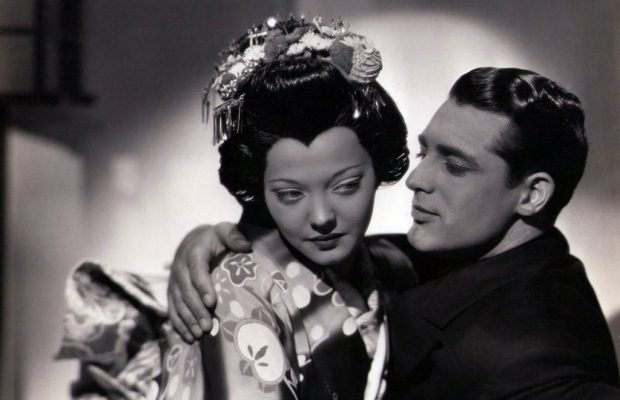
Toronto Film Society presented Madame Butterfly (1932) on Sunday, November 18, 2018 in a double bill with Only Yesterday as part of the Season 71 Sunday Afternoon Special Screening #5.
Production Company: Paramount Pictures. Producer: B.P. Schulberg. Director: Marion Gering. Screenplay: Josephine Lovett, Joseph Moncure March, based on the story by John Luther Long, play by David Belasco. Cinematography: David Abel. Editor: Jane Loring. Music: W. Franke Harling. Art Direction: Wiard Ihnen. Costume Design: Travis Banton. Release Date: December 30, 1932.
Cast: Sylvia Sidney (Cho-Cho San), Cary Grant (Lieutenant B.F. Pinkerton), Charles Ruggles (Lieutenant Barton), Irving Pichel (Yomadori), Helen Jerome Eddy (Cho-Cho’s Mother), Edmund Breese (Cho-Cho’s Grandfather), Louise Carter (Suzuki), Sándor Kállay (Goro), Judith Vosselli (Madame Goro), Sheila Terry (Mrs. Pinkerton), Dorothy Libaire (Peach Blossom), Berton Churchill (American Consul), Philip Horomato (Trouble).
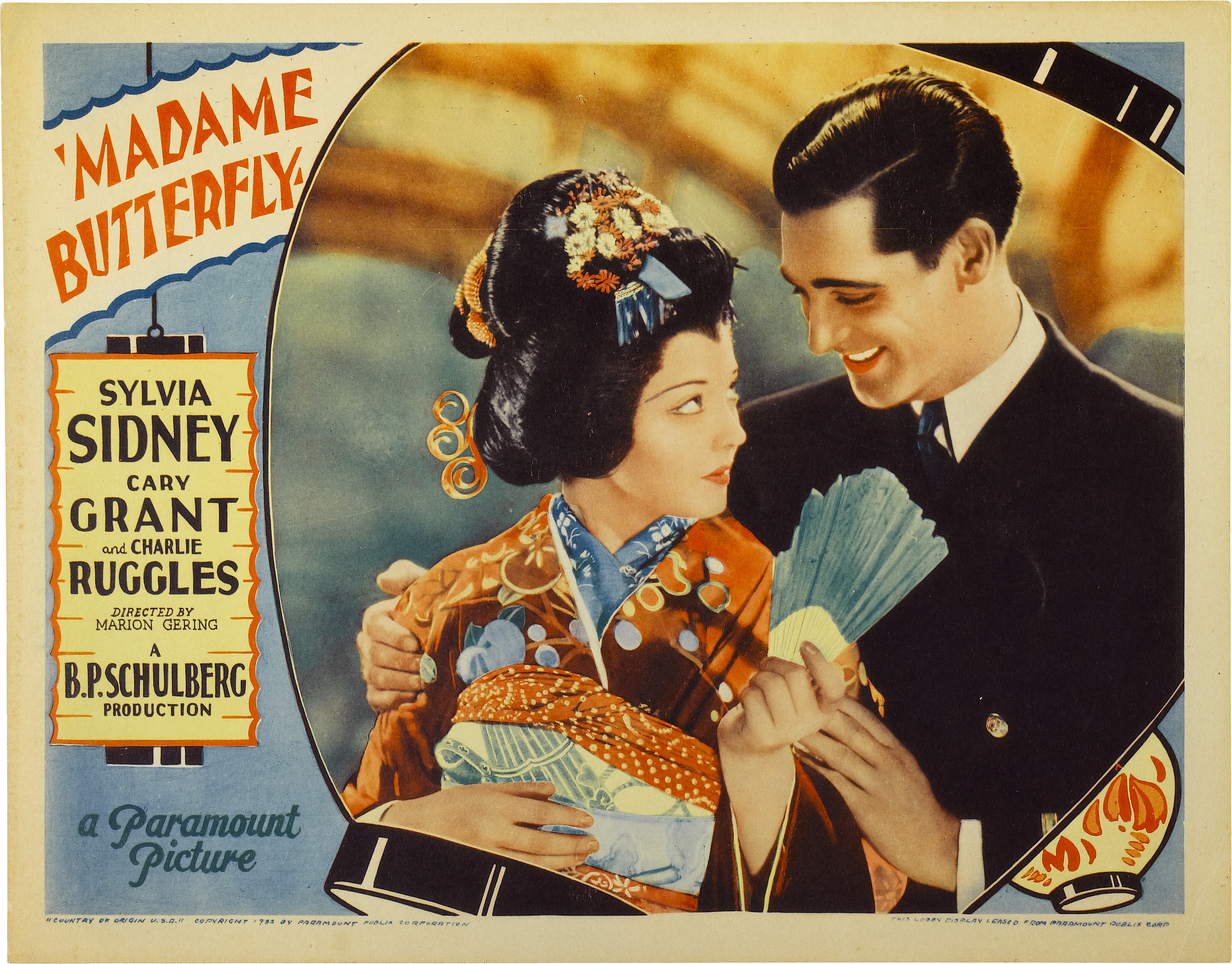
There’s no other actress who can hold a candle to Sylvia Sidney when it comes to suffering.
If you haven’t read the film notes yet, that’s a good thing. All of them are negative and pretty much every review I have read elsewhere doesn’t seem to give the film any positive slant. So why did TFS decide to screen this film? I’ll take the blame by saying that I fell for the story when I first saw this film as a young teenager. At that time, I’m pretty sure I wouldn’t have thought anything of the fact that it was acted by an all-white cast. Seeing the film today, I look at it as a pre-Code film, telling a famous story.
This 1932 film was actually the third film production of Madame Butterfly. The first was made in 1915 directed by the prolific Toronto-born Sidney Olcott, starring Mary Pickford and Marshall Neilan. I have had the opportunity to see this film made 17 years prior to today’s, and while it’s even more non-Japanese looking than the 1932 film, it’s also certainly worthwhile a view both to see the sets and Pickford’s idea of a Japanese woman. The second version, also made in the Silent era in 1922, was The Toll of the Sea starring Anna May Wong. The screenplay was written by Frances Marion and the country was changed from Japan to China, although in true sarcastic mode, I doubt the American audience of the day would have been able to tell the difference. Perhaps Wong appreciated the distinction.
While I was scanning the contemporary magazines, I came across pieces of information that I thought would be of interest to share. Modern Screen mentioned in an advertisement for the upcoming film that Bette Davis would play the wife of Cary Grant’s Lieutenant Pinkerton. That would have been a small but certainly memorable role which would have delighted us now, but that turned out not to be the case. Sheila Terry got the part. Who was she? The only lead I believe she had in all of her 43 credits was in the 1933 film The Silk Express which TFS screened in 2016 at the May Movie Magic weekend. She might become better known if ever the lost 1933 Joan Blondell film Convention City, considered one of the raciest pre-Code films made, is ever found.
But back to Sylvia. She claimed—although it may well be the studio publicity team’s claim—that she is no stranger to doing whatever it takes, Lon Chaney style, to bring about the effects that are needed to create her character. So, it appears, the makeup that was used to change Sylvia Sidney into Cho-Cho San, was a painful process. Still, most likely less painful than having to make limbs disappear.
Another claim to fame—and I wonder if she was amused or not—is that this film created “the Sylvia Sidney package”, a brand of condoms that were sold throughout Japan and the Far East.
And one last point of interest, which has nothing to do with today’s movie, is that she starred in the first film that was photographed using outdoor Technicolor film, the 1936 The Trail of the Lonesome Pine.
I have seen all or most of the films Sylvia Sidney made up to 1947, when she switched into playing roles for TV. In 1992, I went to see the not particularly good film as it turned out, Used People, partly because it boasted an eclectic cast—Shirley MacLaine, Kathy Bates, Marcia Gay Harden, Marcello Mastroianni and Jessica Tandy but especially because it featured Sylvia Sidney. Unfortunately, her role was small, but she was still impressive. It was a story about Jews and Italians coming together and she played a Jewish grandmother to perfection, unlike Jessica Tandy, who, even in Driving Miss Daisy, could never convince me she was Jewish. Shortly afterward I learned that Sylvia was Jewish, so I believed the portrayal was innate and the role was well cast.
Sylvia acted in films well into her 80s. When my kids were little, I had the pleasure of watching her several dozen times in her last film, Mars Attacks! and would point out to them who the grandmother was. She was also in the Beetle Juice, and I was delightfully surprised to see her in the pilot of WKRP in Cincinnati, playing the mother of the radio station owner Arthur Carlson, only to be replaced by Carol Bruce when the series started into its first season.
But the most unusual film choice Ms. Sidney made was the 1983 film Copkiller or Corrupt starring Harvey Keitel. Although she plays the grandmother to John Lydon, better known as Johnny Rotten, the singer for the notorious Sex Pistols, she never had a scene with him. For Sylvia, my presumption is that she did it for the money. I’m not sure what the angle was on the side of the Italian production company but I kind of think that the casting was brilliant. Keitel, Lydon and Sidney. I’ve always wondered what a scene between grandmother and grandson would have been like.
I once had an opportunity of seeing Miss Sidney live, but for personal reasons couldn’t attend Cinecon the year she was a guest there. Something I regret, but one of the organizers told me she was rather caustic. I think I would have been afraid to approach her.
But back to Madame Butterfly. While filming the last sequences of the movie, Cary Grant began work on Mae West’s film, She Done Him Wrong. While this latter film helped boost Grant’s career, Madame Butterfly was the film he claims to have most detested of all the films he made and apparently in later years he attempted to buy the negative in order to destroy it. Whether a good or bad film, we should be grateful this was something he didn’t accomplish, or it would have been another film lost to posterity.
Lastly, I would like to mention Irving Pichel who plays Yamadori, Cho-Cho San’s Japanese suitor. Pichel has 70 acting credits to his name and some of the roles that stood out for me was when he played villains in such films as the talking version of The Cheat and the shady lawyer in The Painted Woman, both early 30s films. But it’s also noteworthy that Pichel worked as a director, making 39 films, his first being the 1932 The Most Dangerous Game and the 1935 and first version of She, both made jointly with another director. He continued to make on his own diversified films such as the 1940 anti-Nazi film The Man I Married and the romantic comedy Mr. Peabody and the Mermaid in 1948.
He was one of 19 members of the Hollywood community who were subpoenaed by the House UnAmerican but refused to name people who were suspected of being communists. Apparently, the anti-Nazi film mentioned above, The Man I Married, was the catalyst that caused HUAC to consider him a communist sympathizer. He was investigated as a case of “premature antifascism” but was cleared although some years later assistant director Joseph C. Youngerman confirmed that Pichel was, in fact, a member of the Communist Party. Although at the time he was cleared, he still continued to be blacklisted, and this caused Pichel to feel forced to leave the US in order to direct his final films. He developed a chronic heart condition which eventually led to his death in 1954 at the age of 63.
And now, please take out your hankies and enjoy suffering through Madame Butterfly.
Introduction by Caren Feldman
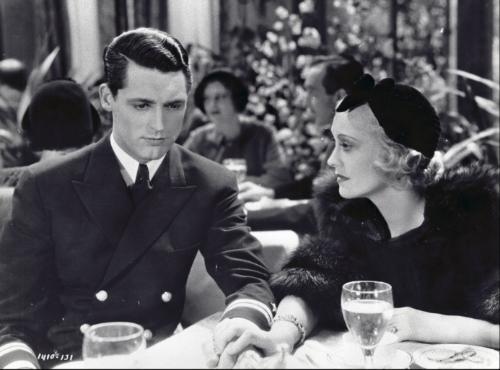
Except for the persuasive acting of Sylvia Sidney, Madame Butterfly, as a talking film, is not especially successful. The script seems to have been contrived on the theory that an aggressive use of the word “honorable” in the dialogue allotted to the Japanese characters would result in a picturesque quality. Miss Sidney, in particular, is forced to wrestle with a type of pidgin English that smacks less of the Orient than of the studio mills. Cho-Cho San’s dashing American lover is “the most best nice man in all world,” as well as “Honorable Lieutenant B.F. Pinkerton, the whole works.” The humor is of the same whimsical antiquity, and it accomplishes the feat of representing Charles Ruggles as an ineffective comedian. The tragic romance of the geisha girl moves leisurely through an exquisite flower garden, Goro’s sinful establishment and the lovely Cho-Cho’s house on the hill where she can watch the American fleet in the harbor and sigh for her lover to return. Through the story runs an engaging musical score compounded from Puccini’s “Madame Butterfly” strains. In costuming, make-up, and settings, the film is quaintly satisfying, and the composition of the photography has its own charms. The pace of the picture is too lethargic for modern audiences.
Variety: December 26, 1932
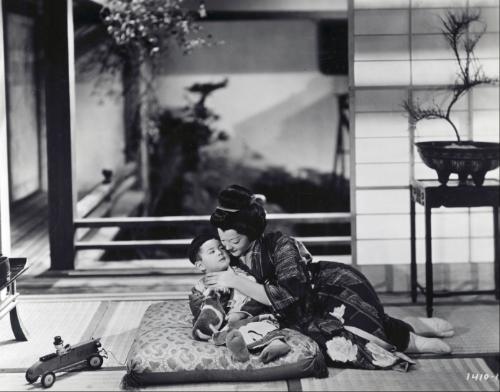
Slow moving and tedious talkerization of the noted operatic and legit plot that must depend entirely on the title to draw its business. As a picture it is hardly more than fair, and as a grosser it should rate about fair also. Although the pattern has been used for screen purposes in various forms countless times, the “Butterfly” theme and title have been dormant in this amusement branch since a silent version, years ago. Although it’s cleaned up a bit, with the seduction of Mme Butterfly slightly purified by a native marriage ceremony, and the dialog contains some current slang that wasn’t in the original, nothing radically new was inserted by the talker producers. The most pleasant change is the tragic heroine, Sylvia Sidney, as lovely a Mme Butterfly as ever curled her eyebrows upward. Miss Sidney was up against a tough assignment, and sometimes she doesn’t finish on top. The role as constructed and the lines as written very often become too much of a struggle for her, as they would for probably any actress. As the wistful geisha girl who meets her one and only in her first night at the Japanese Rose Bailey’s and then crams an entire married life into a Yankee sailor’s six weeks’ shore leave, she is most convincing, most of the time. But the old-fashioned build-up and the pigeon English that goes with it make for an unfavorable start. By the time Miss Sidney surmounts the handicaps by the simple artistry of her acting, the plot has slowed down to a turtle’s gallop. It’s too late, then.
There are numerous Japanese characters in for every purpose from paternal severity to comedy relief. They do everything but [a] Risley [act]. More comedy comes from Charlie Ruggles in one of those stock Ruggles roles. Cary Grant is okay on the looks, but a rather cold Lieut. Pinkerton who fails to look, sound, or act as impulsive as the authors intended him to be. A cute Japanese kid about three years old is the cast’s most interesting member outside of Miss Sidney. Puccini’s opera score runs through the sound track as a musical background, but never is permitted to be heard above the dialog nor gain distinction in the pantomimic moments. Grant sings one song and it isn’t so hot.
Variety by Bige., December 27, 1932
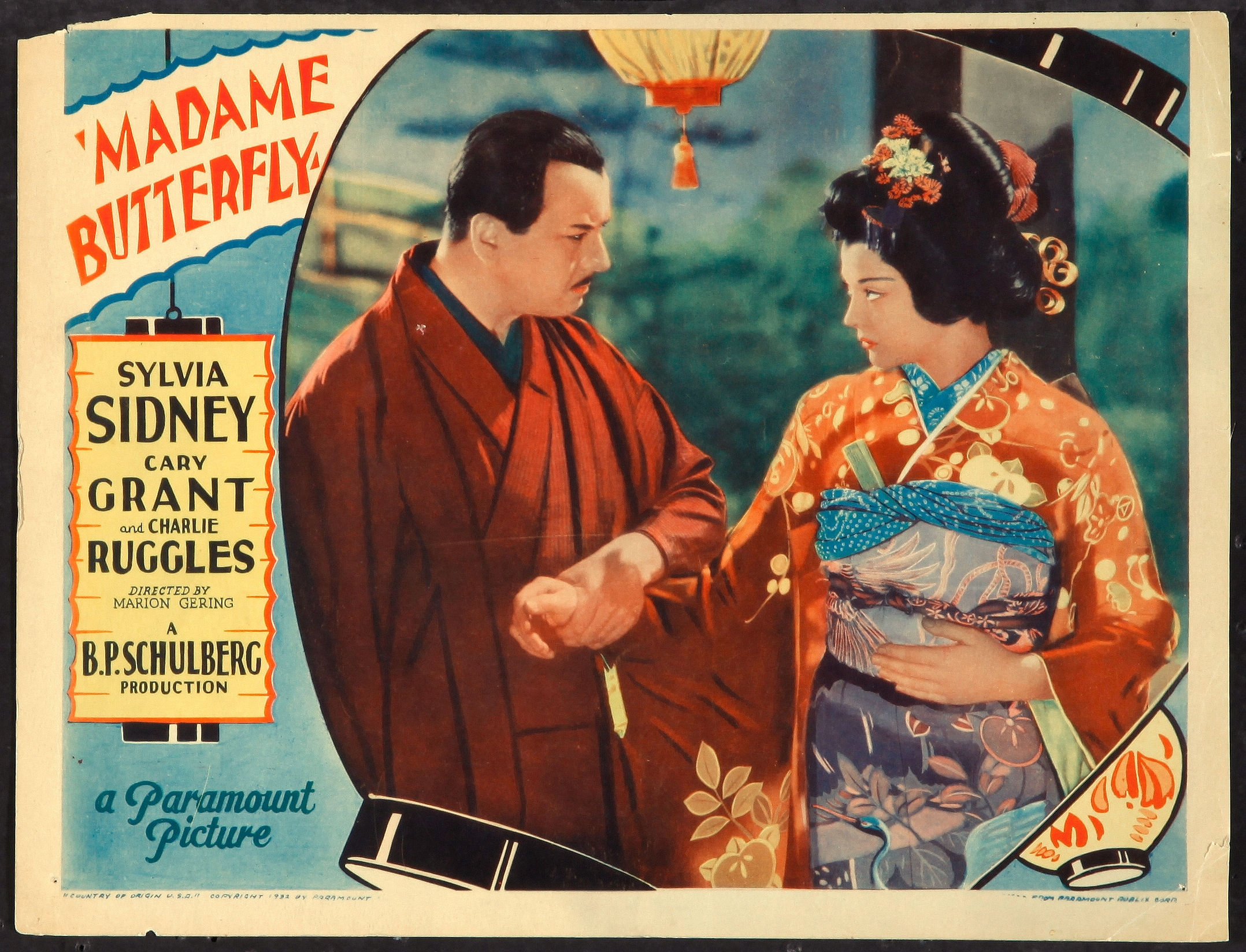
Madame Butterfly, Cary Grant’s seventh and last 1932 film was little help in his career. As in David Belasco’s play, the inspiration for Giacomo Puccini’s durable opera, the plot’s main focus is on its heroine, Cho-Cho San (Sylvia Sidney), who marries selfish Lieutenant Pinkerton (Grant), a U.S. Navy man temporarily stationed in Yokohama. Eventually, he must return home, promising to come back “when the robins build their nests.” By the time he returns—several years later—“Butterfly” has his son, unknown to Pinkerton. She has lived only for his return, and when she discovers that he now has an American wife (bland Sheila Terry) and considers their union no more than a passing romance—a pleasant memory—Cho-Cho San decides to “die with honor, rather than live without it.” If Madame Butterfly did little to enhance Grant’s burgeoning career, neither did it harm him, for women could hardly fail to notice Cary Grant’s dark and handsome good looks, enhanced by his naval uniforms. The actor’s striking physical appearance was exactly what now gave an added boost to his film future, in the buxom form of an unexpected benefactress—Mae West.
Miss Sidney is lovely and appealing as the tragic heroine and, almost single-handedly, maintains the viewer’s attention, since Marion Gering directs the picture at a pace too sluggish for the creaky plot. Without the sumptuous Puccini score, which the studio uneasily blended in the background with its own “incidental” music, the hoary old tearjerker holds little interest. As the caddish Pinkerton, Grant is given little to do. In the opera, the character at least has the rousing tenor-baritone duet “Dovunque al mondo” and his long, idyllic duet with Butterfly that closes Act 1, as well as the plaintive Act 3 aria, “Addio, fiorito asil.” By way of compensation, the 1932 film has ex-Broadway tenor Grant sing to Sylvia Sidney a little ditty entitled “My Flower of Japan,” neatly turned out for the occasion by W. Franke Harling and Ralph Rainger. Undoubtedly, it was easier for him to sing to Sylvia than to stand by while she called him “Honorable Lieutenant, the most best nice man in all the world.”
Cary Grant by Jerry Vermilye (1973)
Notes compiled by Caren Feldman

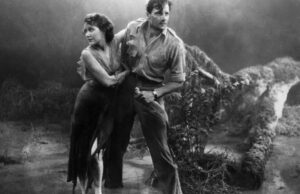
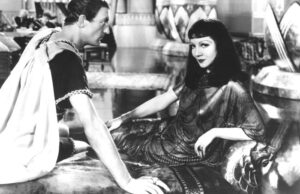
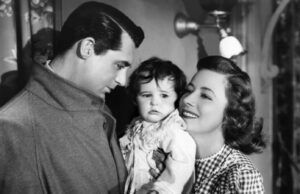






Leave a Reply